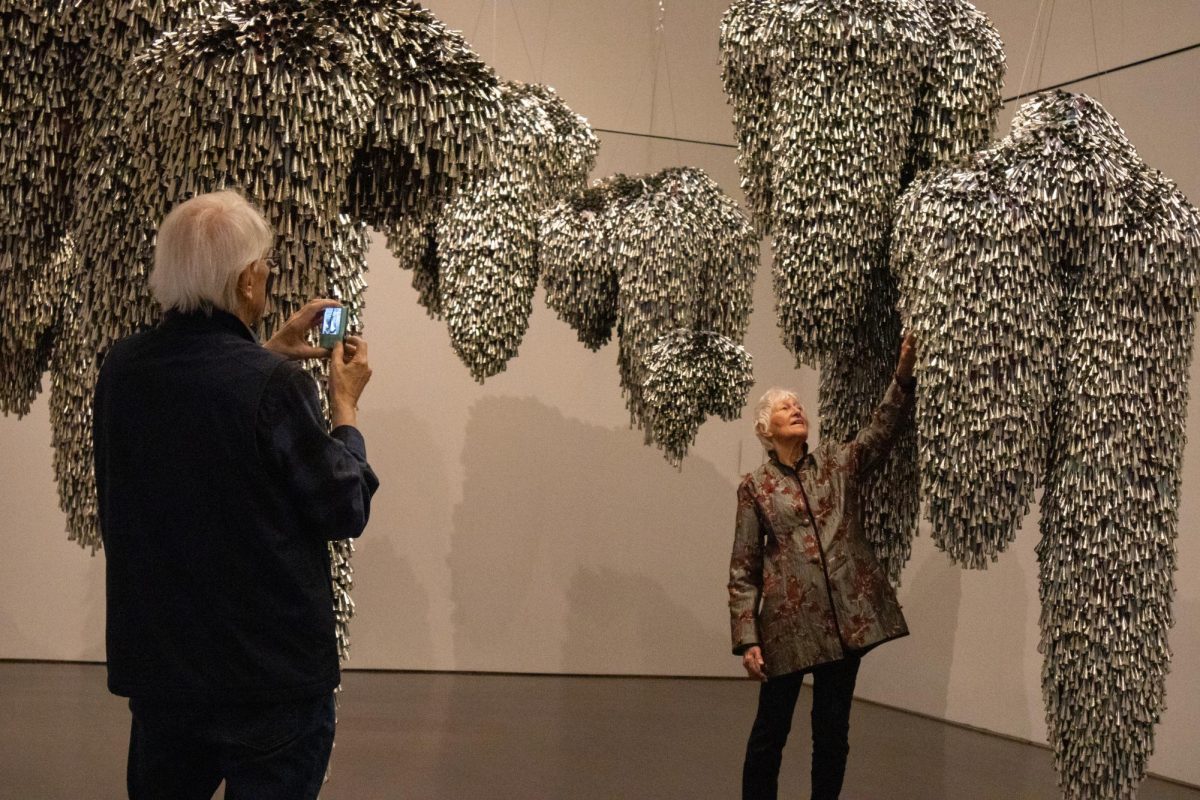Audible from around the corner of Marie Watt’s solo installation, fingers run through a coat of hanging tin cones in the room Watt transformed into an immersive sensory space.
On display at the Blanton Museum of Art since March 2, the Seneca cross-disciplinary artist’s “Sky Dances Light” installation invites viewers to walk through her forest of hanging jingles. The installation consists of 13 sculptures modeled after Jingle Dresses originally worn by the Ojibwe tribe for a healing dance introduced during the Spanish flu. Known as the “Jingle Dress Dance,” it expanded to other Native American tribes who still perform it in powwows.
“Marie has this way of connecting art to people’s lived experiences, even when it’s not their own community or their own lives,” said Hannah Klemm, curator of modern and contemporary art at the Blanton Museum. “I got the impression people feel very connected to the work.”
In addition to the rich history behind the pieces, they hold grand visual appeal. Linking to how each of the jingles catches light, Watt said she finds humans’ attraction to shiny things fascinating.
“I do think it’s interesting how light calls us — and is the response to touch it?” Watt said. “Light is really hard to hold. Well, you can’t really hold it, but then there’s this gravitational pull to it.”
As the sculptures reflect thousands of glints of light, they entice visitors to touch them, and they can. Watt’s installation distinguishes itself from others in that it encourages visitors to interact with it.
“Marie is coming from the point of view that many objects of Native American art are not meant to be behind the glass or on pedestals,” Klemm said. “They’re literally used and lived. So she’s also trying to conceptually bridge these worlds of lived art and lived experience.”
With the suspension and sheer size of the pieces came an intricate installation process, but Matthew Langland, head of installation and exhibition design at the Blanton Museum, said their installation team completed the job in a week.
“Some of (the pieces) are very heavy, something like 135 pounds, I think is the heaviest one. We had to think about physically raising these objects up so we could suspend them from our ceiling,” said Langland. “We built our own kind of rig that we could attach a mechanical winch to and hoist these objects right out of their crates up into the air.”
The joint contribution of Watt’s compelling installation and the Blanton’s staff brought together the installation, which will remain at the Blanton until Oct. 20.
“I hope the work draws people to the space,” Watt said. “In many ways, we all grow up surrounded by art, but sometimes, we don’t think of those experiences we take for granted as being experiences we take for granted.”














